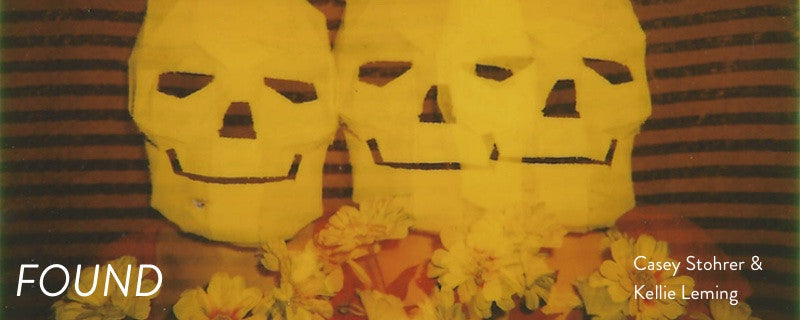
FOUND with Casey Stohrer & Kellie Leming
In this month's FOUND, we caught up with a couple of hard-working women, two Nashville gems who both share a passion for music and the visual arts. Casey Stohrer, writer, illustrator, and front woman of Casey Jo & The Friday Night Dads, and Kellie Leming, graphic designer, illustrator, and photographer, sat down and opened up on their artistic processes, favorite mediums, and creative inspirations. Check out our interview below and be sure to catch up with these gals on all things social.
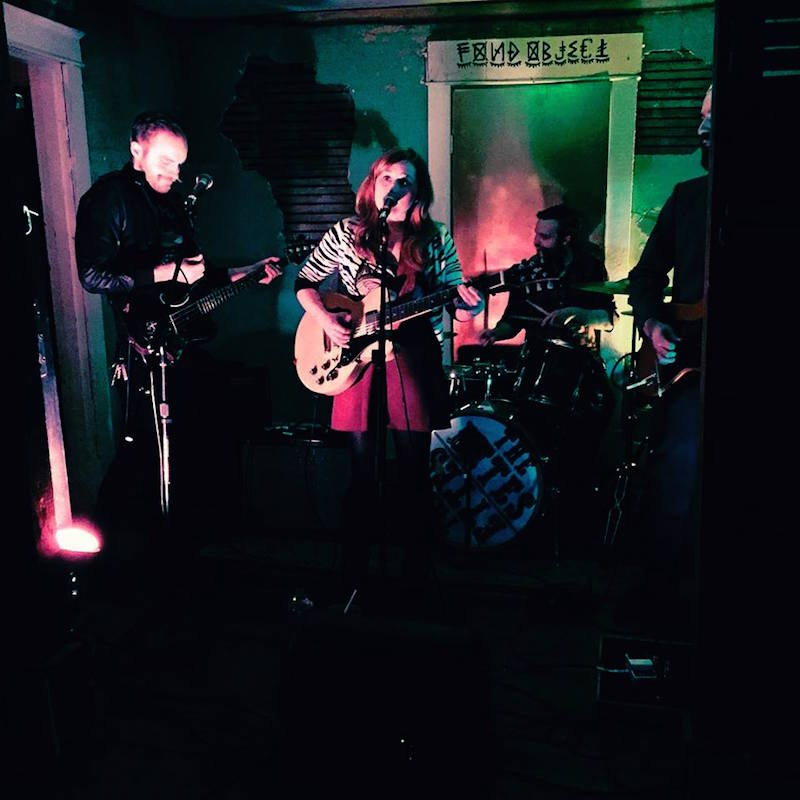 Casey Stohrer via Facebook
Casey Stohrer via Facebook
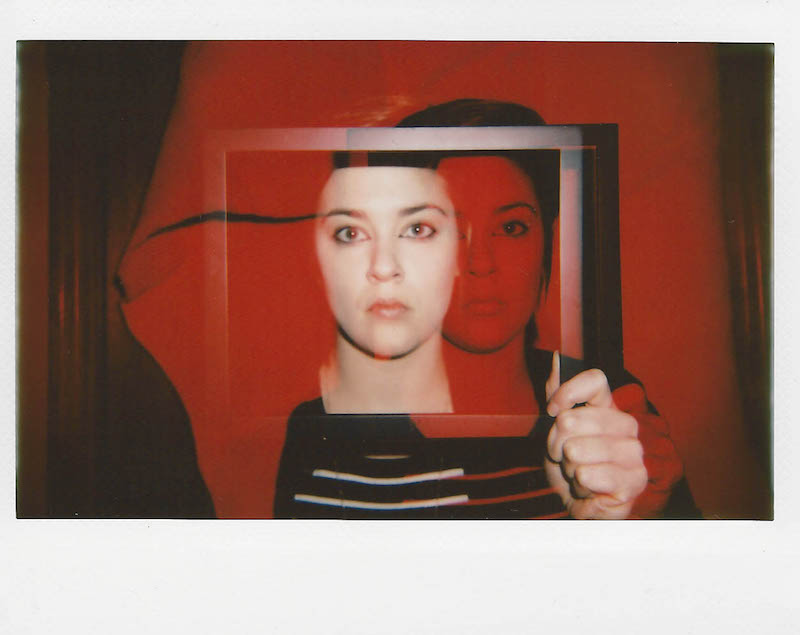 Kellie Leming
Kellie Leming
What do you do?
Casey: I mainly sing and play guitar in my band, Casey Jo & The Friday Night Dads. But, I'm always working on other writing and art projects. I draw a little black and white single-panel comic called Big Ramrod Death. I like to draw unsettling creatures. I have a whole series about everyday turd people. You know, giant smelly turds doing normal activities, like going to work or to the grocery store or going on a date. There's also a creepy eel, and my sister. You can find them on Instagram and Facebook.
 Casey Stohrer
Casey Stohrer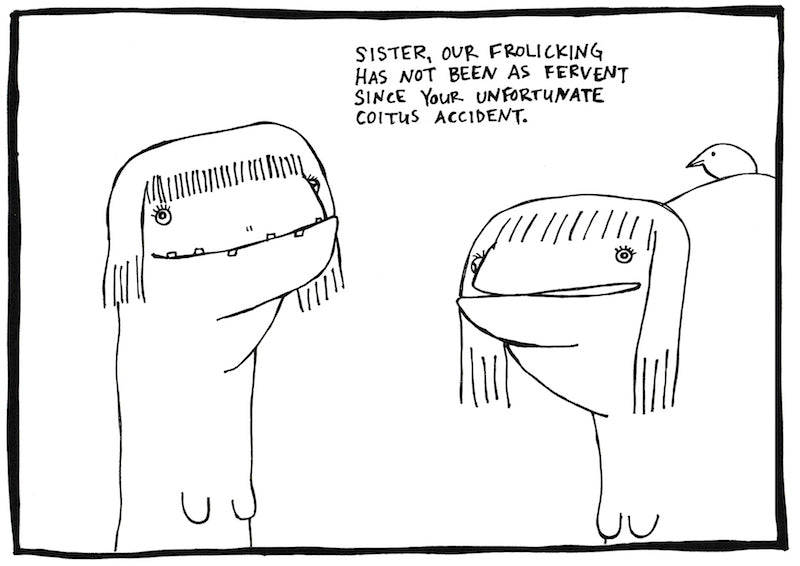 Casey Stohrer
Casey Stohrer
Kellie: I live in Nashville and work as a freelance designer and a pre-media specialist at an international book distributor. I love art and design followed closely by music. My parents gave me the best musical foundation I could have asked for, and it has greatly shaped not only my art but who I am as a person.
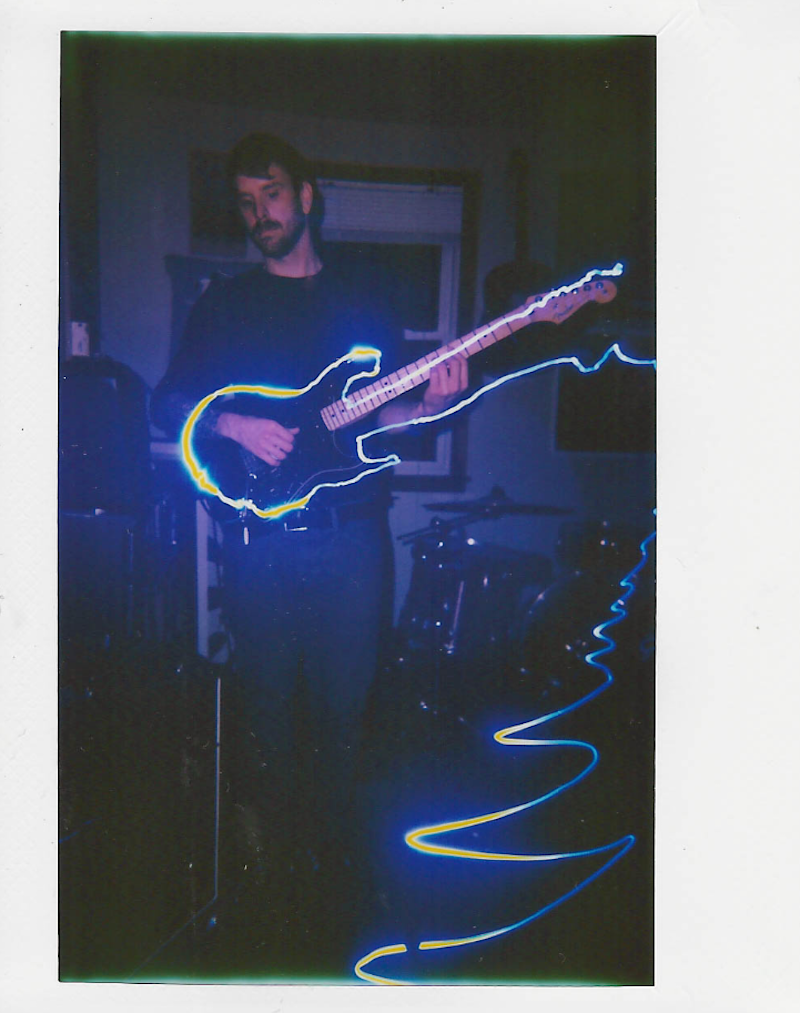 Kellie Leming
Kellie Leming
What is your favorite medium?
Casey: I like pen and ink. I like to keep things very simple so it is suitable for that. I like to draw with ballpoint pens a lot. I guess that's not very sophisticated. But I just like how they feel. It's very scruffy but controlled.
Kellie: I work in a variety of mediums including digital design, photography, fibers, and pen and ink, among others. I have always been involved in the arts and making things as long as I can remember and typically end up using whatever medium matches the idea I am having at that time. When I sit down to just doodle or do some stream-of-consciousness type of drawings, I usually end up liking the pieces I have to force myself through the best. There is something to be said about taking a mistake and forcing yourself through it or turning it into a happy accident. I think that's why I have really been enjoying my Lomography instant camera so much recently. After sitting in a cube staring at pixels all day at work, it's nice having to slow down the process to achieve a desired result without being able to edit out any flaws.
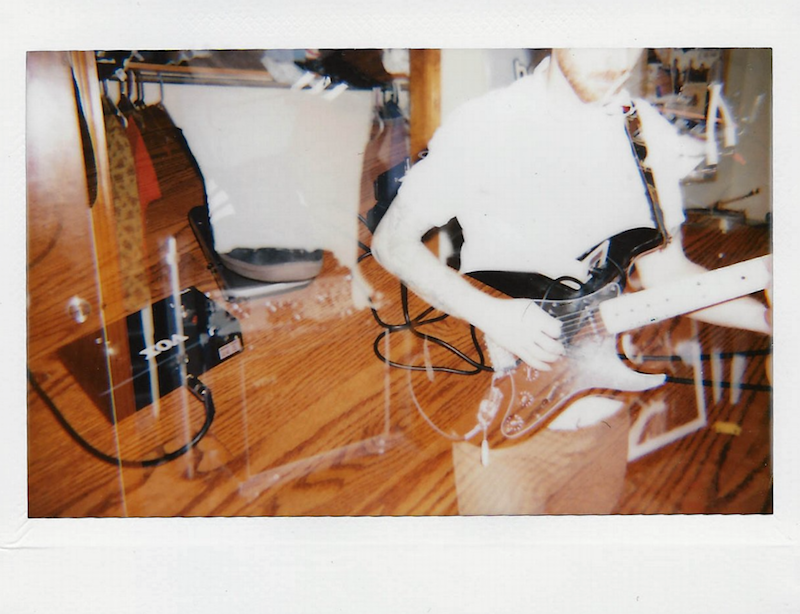 Kellie Leming
Kellie Leming
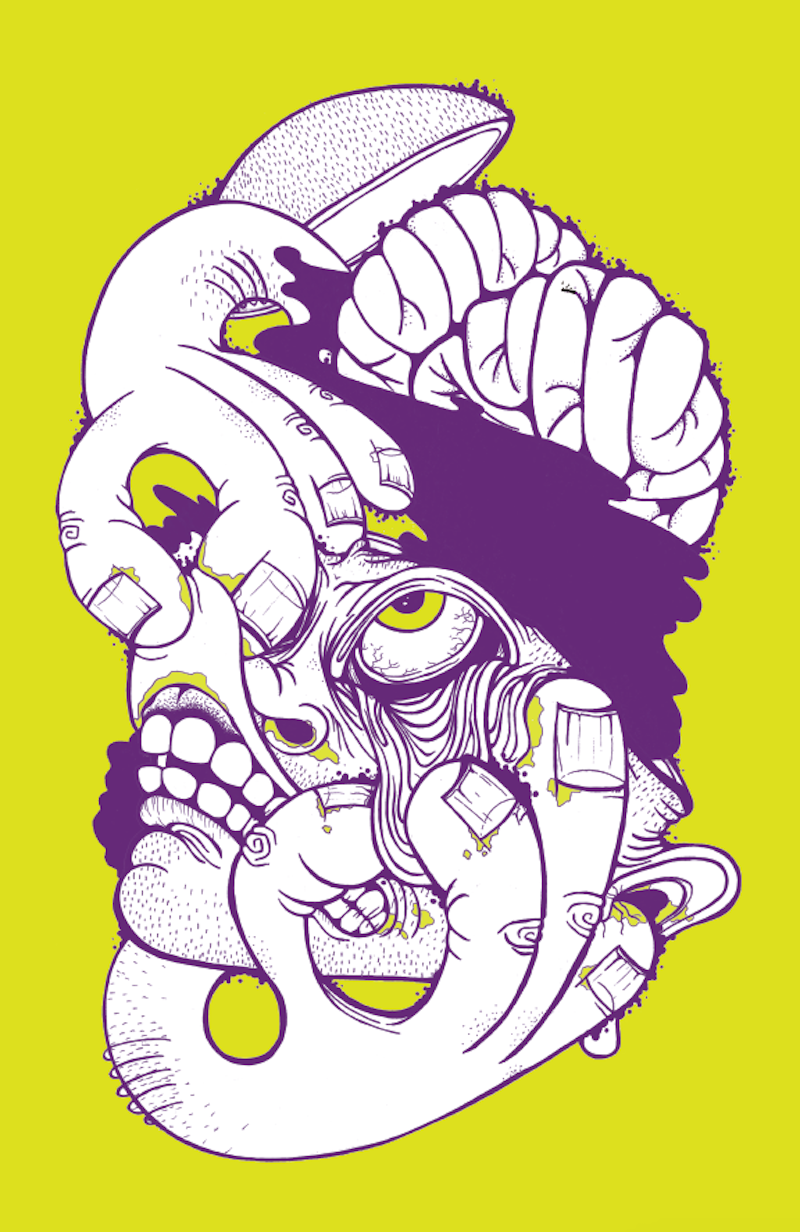 Kellie Leming
Kellie Leming
Who inspires you?
Kellie: When I was younger I always liked drawing cartoon characters. I would run my grandfather's printer out of ink printing off Cartoon Network and (nerd alert) Dragonball-Z images, just to sit there and re-draw them. Eventually I got really into tattoo design which led me to discovering the imagery of Ed Roth’s Rat Fink. Something about kind of gross illustrations really draw me in. I would say I get a lot out of imagery that is uncomfortable but intriguing.
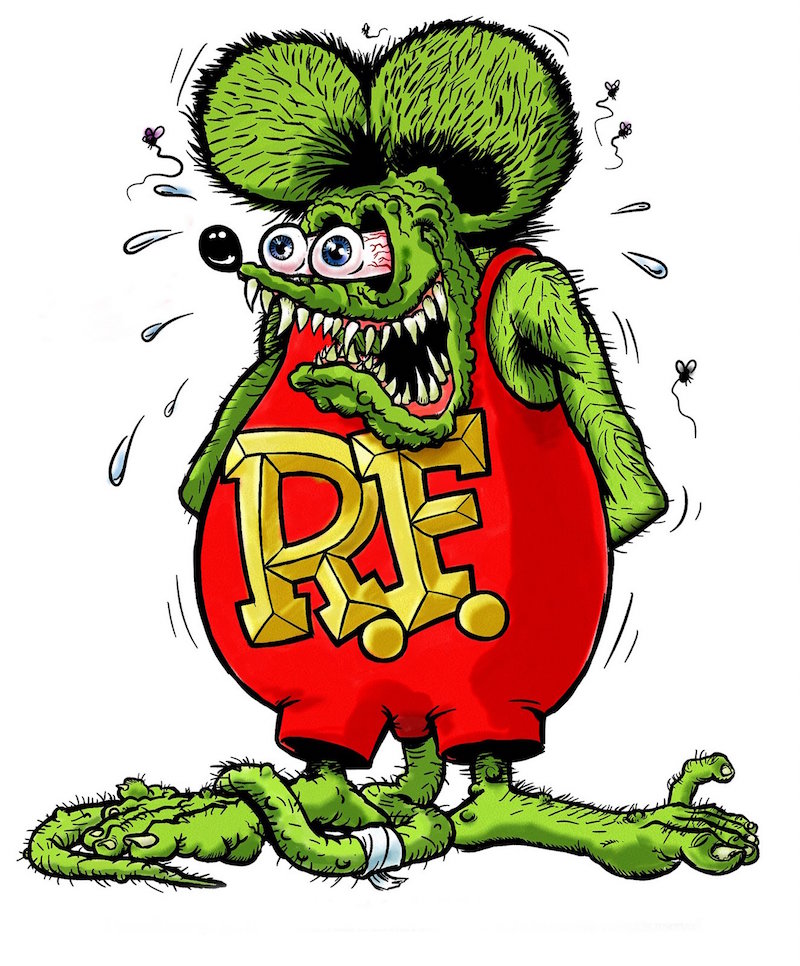
Rat Fink, Ed Roth
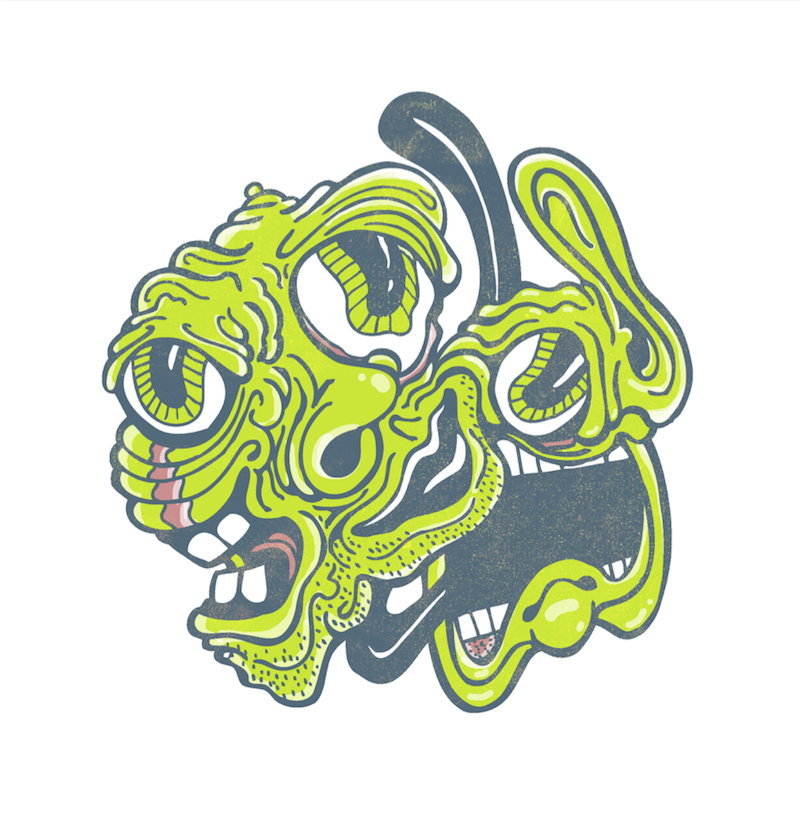 Kellie Leming
Kellie Leming Kellie Leming
Kellie Leming
Casey: There's an artist named David Shrigley who sort of inspired the Big Ramrod Death comics. He does very crude drawings and has a very dry sense of humor, and the direct crudeness of his style lends itself to his humor. I also really like Aubrey Beardsley, an illustrator from the late 1800s. He did these highly stylized black and white illustrations of grotesque sexy people.
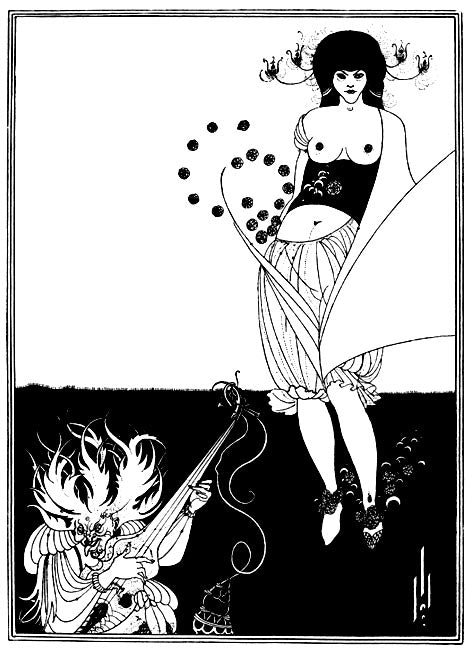
The Stomach Dance, 1893, Aubrey Beardsley
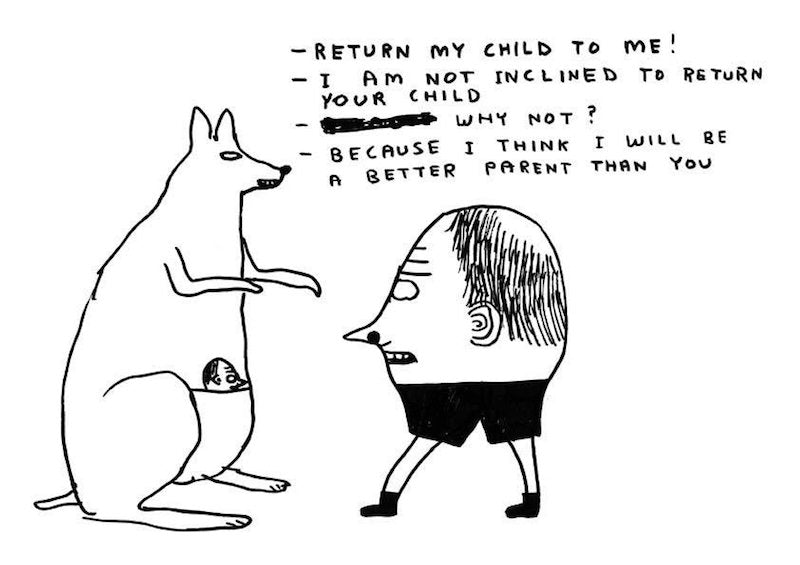 David Shrigley
David Shrigley
 Casey Stohrer
Casey Stohrer
How would you describe your creative process?
Kellie: It's very intuitive. It starts with an idea or sketch, then it's all about working through the limitations of the materials to achieve a result I am happy with. Often, just getting started on a piece will spark a new idea. With a lot of my drawings I start with the eyes and kind of try to meld everything together, adding objects, shapes, and curves as I go, with no real final vision in mind. If I am working with photographs I usually just like to experiment with different color filters, lenses, and multiple exposures until I find something interesting. If I am working on a graphic design project, like a flyer for an upcoming show or a logo, I might start with some sketches or reference photos then bring them into the computer to create a print-ready version of the initial design. At this point, it's really a culmination of all of the above and finding ways to make them work together.
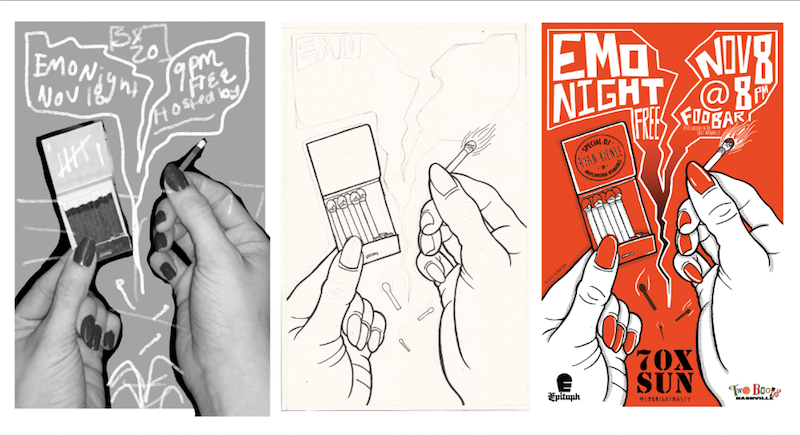 Kellie Leming
Kellie Leming
Casey: I'll get an idea for something and then have to decide on which medium to apply this idea. Is it a drawing? A story? A song? A collage? Then once that's figured out, I'll do sketches (whether it's pictures or words) or free writing to develop it. Sometimes I'll use the same concept in multiple mediums and points of view, just to see if anything pops out. Then the drawing and writing keeps going on until I feel like it's finished, or I get sick of thinking about it all the time.
In this age, do you prefer digital or analog?
Casey: I like both. I feel like digital is more controllable, or user-friendly, which is useful for a lot of reasons. But analog is always warmer, whether it be for music, or photographs, or whatever medium it is. There's a wildness to the quality because the unexpected can happen. With digital you can always edit and undo.
Kellie: I am able to utilize a combination of both. When I was in school, I looked down on digital art, but I think that's because I didn’t understand how it could be used. Now I realize that it is used best when it's a combination of both. For instance, maybe a hand-inked drawing finished digitally, with scanned-in textures. Right now I am all about analog photography, but I'll still scan the image and try to utilize it again.
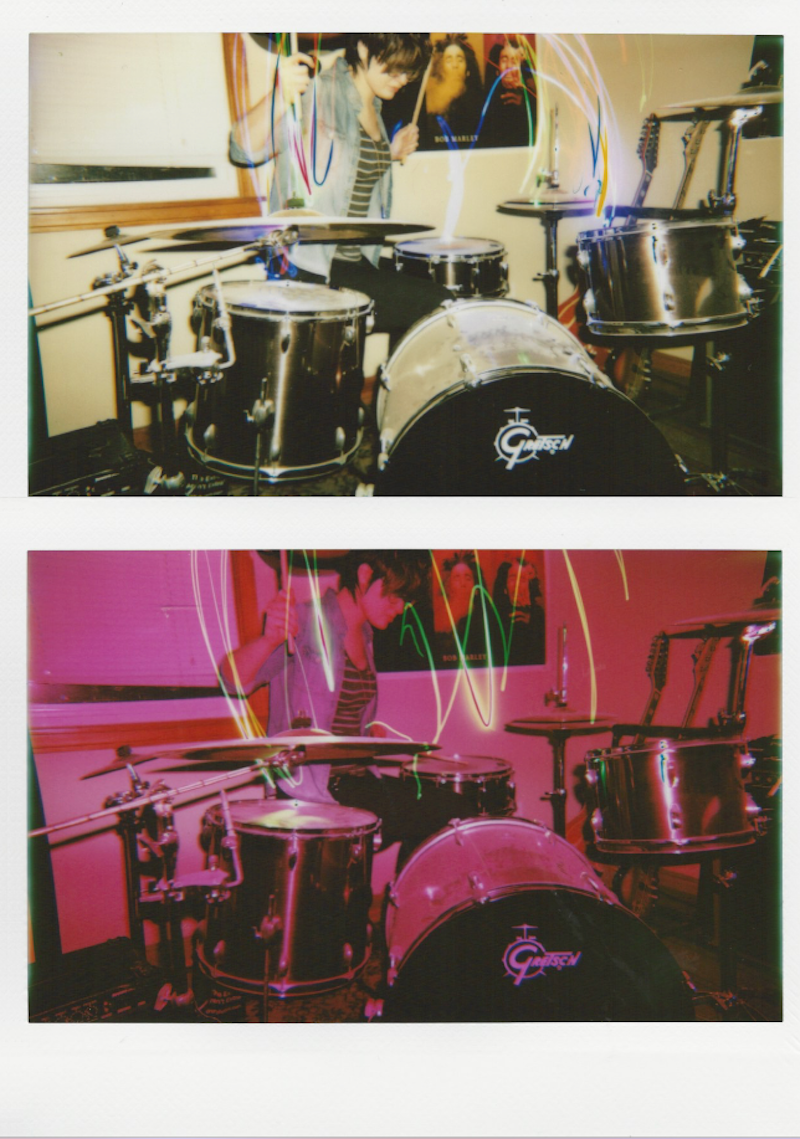 Kellie Leming
Kellie Leming
When did you realize you were an artist?
Kellie: Honestly, I think my mom realized I was an artist before I did. She really encouraged me to continue being creative and bought me art supplies for Christmas and my birthday every year. She said when I was 5 I drew a Shoney Bear that looked exact and thats when she knew. So, I kept drawing and making things and the fact that I would rather sit in my room and play bass and draw all day instead of go to parties made it pretty clear once I was older. When I am not making things or working on a project I get pretty antsy.
Casey: I feel weird about the word "artist," because I feel like that's an occupation, and I don't solely make a living off of it. I've been a creator of things since I was old enough to hold a pencil. I was drawing and painting since I was very little, and started writing stories and songs as soon as I could string words together. I started playing guitar when I was about sixteen. I don't really know how to live life without making stuff and expressing myself. I'm totally useless otherwise. In my early twenties I tried to give it all up, I learned a trade, worked two jobs while I apprenticed, tried to just be a regular working-class citizen, but I had never been so dysfunctional and miserable in my life. It really put my goals into perspective. That's when I realized that I have to make this work, even if I have to have a day job forever. I have no choice but to keep doing it. It just feels right.
What’s your favorite part of the artistic process? The idea or "hanging the finished piece on the wall"?
Casey: Having a finished product is definitely rewarding, and getting feedback and criticism from other people is very validating for sure. But honestly, it's the therapy aspect. It's all the usual feelings about being misunderstood and an outsider, and this is how I communicate, how I talk myself through terrible things that have happened in my life. Writing about them has helped me organize and acknowledge my feelings. I know that sounds corny, but if any artist denies that part of it, then they're not really an artist. The whole point in being involved in art and music, for me, as a creator and a participant, is to communicate. Even if it's just a silly comic, you're still eliciting a reaction.
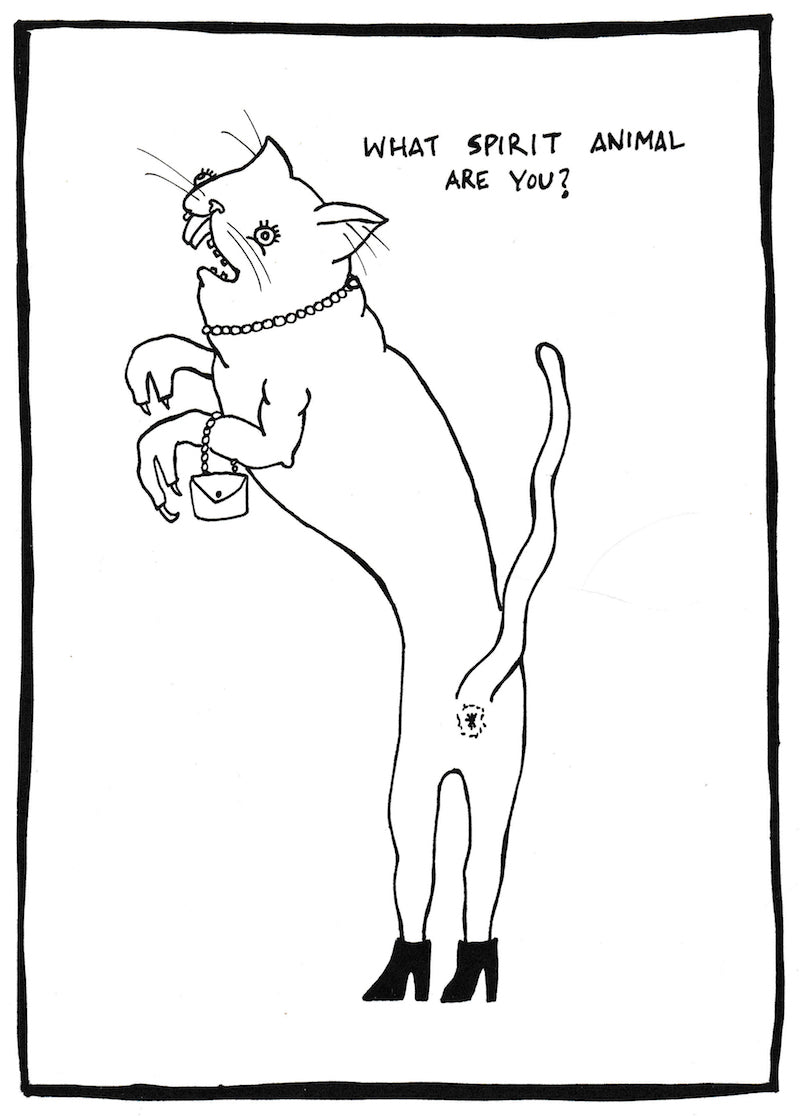 Casey Stohrer
Casey Stohrer
Kellie: I think my favorite part is definitely the process. I love figuring out how to obtain a desired result and getting to experiment with different mediums. By the time I get to the point of "being done", as an artist you never feel done and always see a million things you would like to change or improve, I am usually tired of looking at the piece. It ends up being this cathartic moment where you kind of purge the anxiety you may have had about the piece and you kind of just leave it there on the wall for everyone to see.
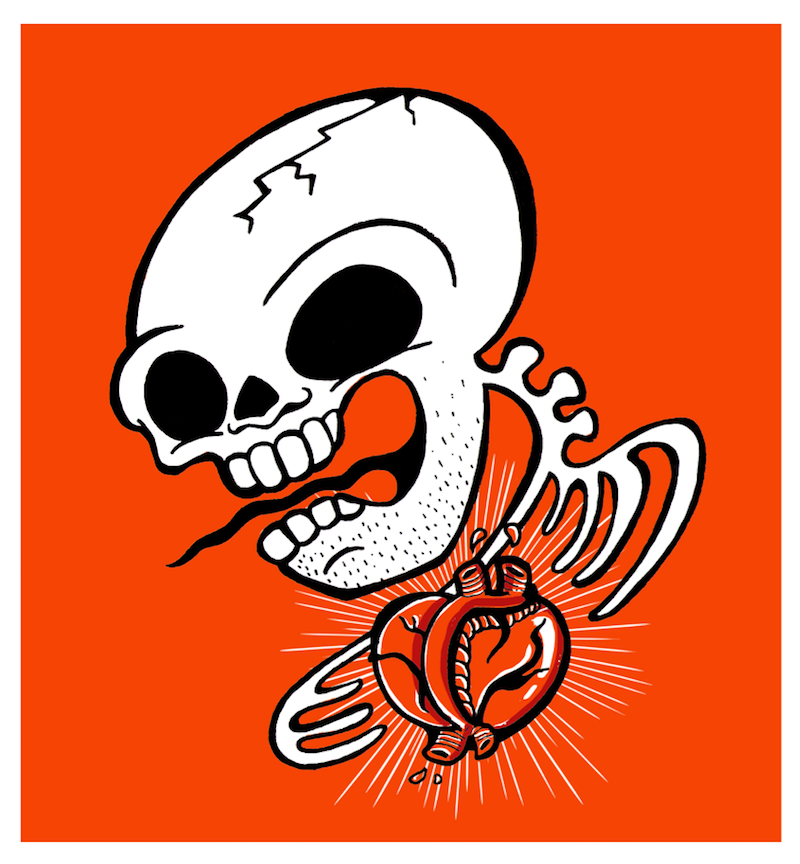 Kellie Leming
Kellie Leming
One last question, how did you discover Original Fuzz?
Kellie: I learned about Original Fuzz at an annual makers fair we have in Nashville Called Porter Flea. I play bass, so I stopped to look at the amazing straps and ended up buying a sweet John Prine tote for Casey for Christmas.
Casey: I came across the "Prine Time" t-shirt through my social media meanderings and I was like, "oh these guys totally get it!". And then, very serendipitously, Kellie found the tote bag version at Porter Flea Market and gave it to me as a gift, so it all came back around.
FOUND is a monthly series by Original Fuzz Magazine. We aim to discover visual artists from every corner of the world, no matter the background or creative vision. We believe that all art is as important to our culture as music, words, news, science, even religion. FOUND celebrates the visual and those who create it, serving as a platform for the creative pioneers who embody Original Fuzz and our products.
FOUND is brought to you by Liz Earle, a freelance writer and purveyor of curiosity and imagination in the arts.
